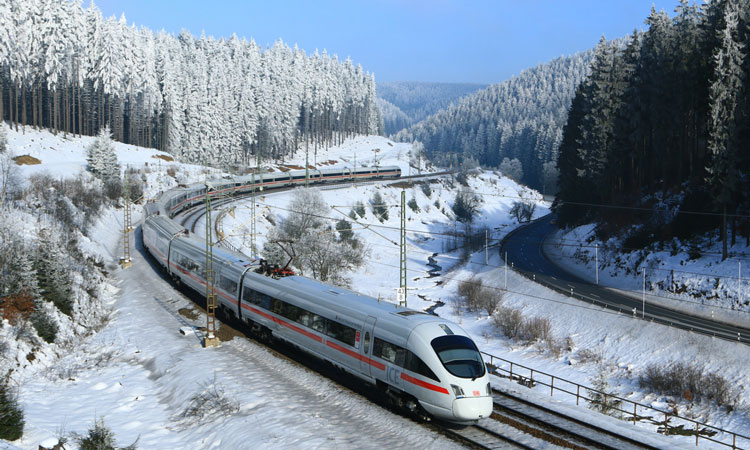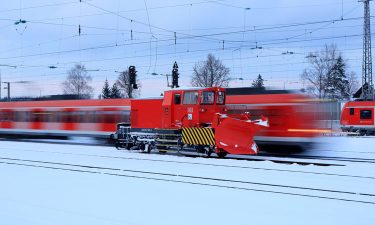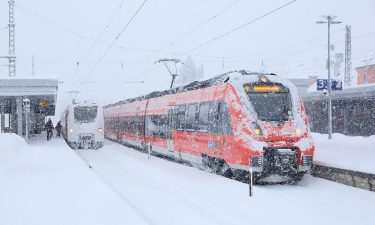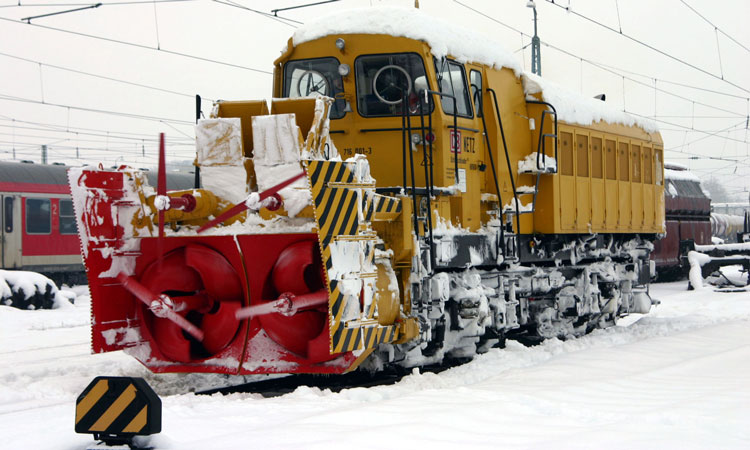Deutsche Bahn: Avoiding the impact of winter weather
Posted: 18 February 2020 | Deutsche Bahn AG (DB AG) | No comments yet
Deutsche Bahn, Germany’s railway operator and infrastructure owner, is well prepared for winter. Read on to learn about the various activities and techniques they use to keep tracks and trains operational when the cold weather hits.


Credit: Deutsche Bahn AG/Jochen Schmidt
In terms of personnel, technology and organisation, Deutsche Bahn (DB) is well prepared for the cold season. In order to ensure that traffic can run as smoothly as possible, training courses have been undertaken. In addition, DB has concluded contracts with clearing companies and procured gritting material. Vehicles and heating systems were also checked to ensure that they are ready for operation. In 2020, a total of €70 million will be available for winter preparations.
In 2020, a total of €70 million will be available for winter preparations.
During winter, tens of thousands of employees from both DB Group and contracted companies will be on standby. They ensure that, in case of snow platforms, points and level crossings can be kept operational. However, as an open system with a route network of around 33,400km, over 5,700 stations and 40,000 train journeys a day, DB is not always immune to extreme weather conditions. In this case the top priority is to provide passengers with up-to-date information. In addition to announcements, customers can be reached via the more than 6,000 dynamic displays at train stations.
Heating systems, snow clearing forces and special vehicles keep tracks free of snow
In winter, the 70,000 switches are particularly sensitive. Therefore, on heavily used routes, around 12,700 of these systems have a special drive cover. Furthermore, 49,000 switches have a heater that prevents the moving parts from freezing. All systems were intensively tested before the winter season. In addition, in Northern and Eastern Germany, DB has connected all 5,800 remote-controlled point heaters to a digital diagnostic platform. Through continuous monitoring, impending faults can be identified and remedied faster. Step-by-step, additional regions will receive the technology.


Credit: Deutsche Bahn AG/Uwe Miethe
Despite all precautions, in case of extreme frost or heavy snow drifts, switch heating can reach its limits. In that case, around 18,000 clearing personnel clear the track by hand. Depending on the conditions, the winter maintenance professionals are on site as quickly as possible. Furthermore, DB uses heavy locomotives that run over snow-covered tracks and draw a track through the snow. With snow depths of over 40cm and long-lasting snowfalls, 70 snow ploughs, blowers and maintenance vehicles are available at strategic network points. Eight regional and one central operation centre coordinate the activities of these vehicles.
Cleared platforms for travellers
More than 5,700 stations with a total of more than six million square meters must be accessible to customers, even in the cold season. DB spends an average of around €30 million during the winter period. As station operator, DB Station&Service AG is responsible for winter services and coordinates clearing and gritting operations, with the support of DB Services GmbH. Regional differences in weather conditions require precise planning. A professional winter maintenance database supports on-site deployment planning with geological data and live evaluations, among other things. Constant readiness ensures that DB Services employees and regional subcontractors are deployed throughout the country. From sweepers to snow-clearing vehicles, various types of machines are used at larger stations.
More than 5,700 stations with a total of more than six million square meters must be accessible to customers, even in the cold season.
Snow clearance on platforms is monitored via app and NFC tag. NFC means ‘Near Field Communication’, which is utilised by contactless payment. The NFC tag is a control badge on which the winter service employees log on and off, informing them of the start and end of the clearing operation. If necessary, the status can be checked at any time in the winter road clearance database and readjusted at short notice.
Trains checked and preheated


Credit: Deutsche Bahn AG/Uwe Miethe
Long before the cold season sets in, DB carries out extensive checks on its trains and vehicles. Specialists grease pantographs, check sanding systems and vehicle batteries and fill windscreen washers with water and antifreeze. In addition, DB electrically preheats parked traction units and passenger trains, which also saves batteries. Before and during the train journey, the locomotive driver occasionally briefly applies the brakes and drives the pantograph up and down. This prevents these important components from freezing. Thanks to diagnostic technology, modern multiple units automatically signal the correct function of the pantograph.
For ongoing maintenance, the railways defrost their vehicles with hot water or warm air. Almost 80 special systems are available for this purpose in cleaning and workshop facilities for passenger transport. A glycol treatment system is installed in Frankfurt to prevent ice and snow from sticking to the vehicle. On heavy winter days, workshops are also open longer. Shifts are flexibly rescheduled at short notice, as required.
Assess weather conditions: Forecasting systems provide data
In order to keep a close eye on weather developments, DB uses various forecasting systems to assess the situation in advance and draw conclusions for further course of traffic. Precise forecasts also help to plan the use of technology and personnel. On the Erfurt-Nuremberg high-speed line, DB has set up four weather stations for route-related live data.
DB’s team of specialists prepares for climate change
In order to be able to better cope with climate change and its consequences, DB has set up its own team of foresters, engineers, water management experts and geoscientists.
Studies by climate researchers show that severe storms, heavy rainfall, heat waves and localised heavy frost and snowfall will increase. In order to be able to better cope with climate change and its consequences, DB has set up its own team of foresters, engineers, water management experts and geoscientists. These specialists evaluate previous weather events and develop concrete measures with which the railway is preparing itself for the climatic changes in terms of personnel, technology and operations. Under the team’s leadership, for example, vegetation management on tracks has been intensified in order to generate a robust, weatherproof stock of trees.


Class 716 snow blower. Credit: Deutsche Bahn AG/Gerhard Thiel
Related topics
Adverse Weather, Big Data, Passenger Experience/Satisfaction, Rolling Stock Maintenance, Station Developments, Sustainability/Decarbonisation, Track/Infrastructure Maintenance & Engineering








